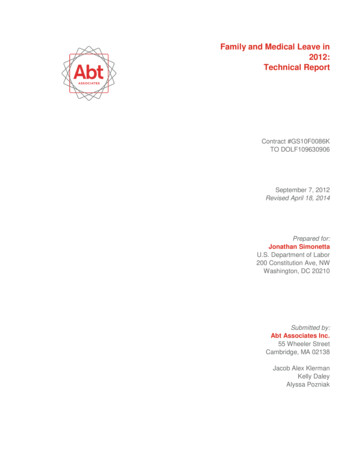
Transcription
Family and Medical Leave in2012:Technical ReportContract #GS10F0086KTO DOLF109630906September 7, 2012Revised April 18, 2014Prepared for:Jonathan SimonettaU.S. Department of Labor200 Constitution Ave, NWWashington, DC 20210Submitted by:Abt Associates Inc.55 Wheeler StreetCambridge, MA 02138Jacob Alex KlermanKelly DaleyAlyssa Pozniak
Family and Medical Leave in 2012: Final ReportPrefaceThis version of the FMLA Technical Report has been updated to reflect minor changes in content andlanguage and correct minor errors. Additionally, the report has been formally edited to revisegrammatical or typing errors and ensure stylistic consistency and proper report formatting. This reporthas not been revised to reflect any changes based on public policy that may have gone into effectsince the initial report submission date of September 9, 2012.Abt Associates Inc.
Family and Medical Leave in 2012: Final ReportAbstractIn 2012, Abt Associates surveyed 1,812 worksites and 2,852 employees about experiences withfamily and medical leave. The worksite survey includes both sites that are covered by the Family andMedical Leave Act (FMLA) and those that are not covered. The employee survey includes employeesthat took leave, those that had an unmet need for leave, those that met both of these conditions, andthose that met neither. It also included employees who are eligible for the FMLA and those who arenot. These surveys update similar surveys conducted in 1995 and 2000. This document presents thefindings of the survey, including comparisons between covered and uncovered worksites, betweeneligible and ineligible employees, and over time. In addition to the main report, there are an ExecutiveSummary, a Methodology Report, Methodology Report Appendices, a Detailed Results Appendix,and a Public Use File Documentation volume.Abt Associates Inc.
Family and Medical Leave in 2012: Final ReportAcknowledgementsThis report is a collaboration of the United States Department of Labor (DOL)’s Chief EvaluationOffice (CEO), Wage and Hour Division (WHD), and Abt Associates. This effort has received thestrong support of the CEO—including Jean Grossman, Demetra Nightingale, and Jonathan Simonetta.The survey and this report would not have happened without their vision and day-to-day input. AtWHD, Libby Hendrix’s understanding of FMLA and her experiences with the fielding and use of theprevious survey were invaluable. Other WHD staff participating in the effort included Mary Ziegler,Helen Applewhaite, and Karen Livingston. Valuable comments on earlier drafts and presentationswere received from the staff of the Council of Economic Advisors, the DOL Solicitor’s Office, andthe DOL Chief Economist.At Abt Associates, Glen Schneider served as Project Quality Advisor, providing key insightsthroughout the project, and careful review of this final report. Members of our Technical WorkingGroup (TWG)—Ann Bookman, Portia Wu, Christopher Ruhm, Jane Waldfogel, and ChristineWalters—provided valuable feedback throughout the project. Katie Heintz and Cindy Taylorprovided valuable management guidance. Katherine Wen, Krista Olson, Johanna Hudgens, BethanyBradshaw, Ben Cushing, and Rachel Banay provided solid research assistance. Nancy McGarryprovided programming support. Suzanne Erfurth and Jan Nicholson edited the document.The survey was fielded by Abt-SRBI under the leadership of Kelly Daley. Allison Ackermann servedas Acting Project Director during the early phase of the project and led the Employee Survey effort.Julie Pacer led the Worksite Survey effort. Courtney Kennedy and Ben Phillips led the technicaldesign and weighting effort. Marci Schalk also contributed to the weighting effort.Abt Associates Inc.
Family and Medical Leave in 2012: Final ReportTable of ContentsExecutive Summary . i1.Introduction . 11.1 Background on the Family and Medical Leave Act (FMLA) . 11.1.1 Changes in FMLA Policy since FMLA’s Inception . 21.1.2 Proposed Changes to the FMLA. 31.2 The 2012 Surveys . 41.2.1 2012 Employee Survey . 51.2.2 Characteristics of the Employee Sample . 61.2.3 2012 Worksite Survey . 111.2.4 Characteristics of the Worksite Sample . 121.2.5 Changes in the Survey Focus from 2000 . 141.3 Notes on Discussion and Language . 141.4 Structure of this Report. 162.FMLA Coverage and Eligibility . 172.1 Covered Firms in the Sample . 172.2 Eligible Employees in the Sample . 202.3 Employees’ Knowledge and Awareness of FMLA . 232.4 Qualifying Reasons for Leave . 272.5 Other Terms of Employment . 333.Worksites’ FMLA and Other Leave Policies. 413.1 Who Is Considered Eligible. 413.2 Worksites’ FMLA Notification Provisions . 433.3 Administering FMLA . 464.Employees’ Leave Taking Practices . 594.1 Prevalence of Leave. 604.2 Number of Leaves Taken for a Qualifying FMLA Reason . 654.3 Duration of Leave . 674.4 Reason for Taking Leave . 694.5 Intermittent Leave . 754.6 Leave for a Qualifying FMLA Reason at Covered Worksites . 794.7 Leave for a Qualifying FMLA Reason at Uncovered Worksites . 835.Conditions of Leave Before, During and After Taking Leave . 855.1 Notice Prior to Leave. 855.2 Medical Certification and Recertification of Need for Leave . 875.3 Pay and Benefits While Taking Leave . 925.4 Fitness-for-Duty Certification before Return to Work . 1075.5 Return to Work After Leave . 1086.Employee’s Unmet Need for Leave . 1146.1 Leave Needed but Not Taken . 114Abt Associates Inc.
Family and Medical Leave in 2012: Final Report6.26.36.46.5Number of Leaves Needed but Not Taken . 120Reasons for Needing Leave . 121Reasons for Not Taking Leave . 127Actions in Lieu of Leave . 1317.Subpopulation Analyses . 1327.1 Leave for Military Personnel . 1327.2 Leave for Paternity and Maternity Reasons. 1357.2.1 Worksite Offers of Paid Parental Leave . 1357.2.2 Employees’ Take-Up and Need of Leave . 1387.3 Leave by Sexual Orientation . 1438.Worksite Responses and Perceptions . 1448.1 Worksites’ Perspective on How Work is Covered . 1448.2 Employee’s Perspective on How Work is Covered . 1518.3 Worksites’ Difficulties Related to Leave Taking . 1538.4 Perceptions of Misuse of the FMLA . 1568.5 Effects of the FMLA. 1569.Conclusion . 1619.1 Evidence from the 2012 Surveys . 1619.2 Directions for Future Study . 162References . 164Abt Associates Inc.
Family and Medical Leave in 2012: Final ReportExecutive SummaryEmployers hire employees to do tasks. When employees take leave to attend to their own medicalissues or to the medical issues of other members of their family, employers must find some other wayto get those tasks done. Under common law, employers may offer almost any terms of employment—which may or may not include offering leave. The Family and Medical Leave Act of 1993 (FMLA)guarantees up to 12 workweeks of unpaid leave each leave year to qualifying employees for specifiedfamily and medical leave reasons and, pursuant to amendments to the law, up to 26 workweeks ofleave in a single 12-month period to care for a seriously ill or injured covered service member.The nation now has nearly two decades of experience with the FMLA. That experience—includingboth employer workplace practices and employee leave taking patterns—was described by earliersurveys of worksites and employees conducted in 1995 and in 2000. In 2012, Abt Associatesconducted a third pair of surveys for the Department of Labor, which is responsible for administeringand enforcing the FMLA. Key findings from these surveys are summarized in this ExecutiveSummary. The document begins with a brief description of the 2012 surveys followed by an overviewof major findings. A more in-depth review of findings plus methodological detail is contained in theproject’s main report and technical appendices.The 2012 surveysLike the 1995 and 2000 surveys, the 2012 effort included two surveys: Employee Survey: Conducted by random-digit dial (RDD) using computer-assisted telephoneinterviewing (CATI), calling landlines and cell phones between February 1 and June 24, 2012,yielding 2,852 completed interviews (including oversamples of “leave takers” and those with“unmet need for leave”). Worksite Survey: Conducted by a respondent-selected combination of phone (using CATI) or webbetween March 12 and June 15, 2012, yielding 1,812 completed interviews with worksites (notmerely corporate headquarters).The analysis is based on the use of sampling weights to adjust for stratified sampling and survey nonresponse.Most worksites are not covered by the FMLA, though more thanhalf of employees are eligible for the protections of the FMLA.To be covered by the FMLA, a worksite must be part of a firm with at least 50 employees. Only aboutone in six worksites reports that it is covered by the FMLA (17%); another 30% are unsure. Theseuncovered and unsure worksites tend to be small; covered worksites tend to be larger.Not all employees at covered worksites are eligible. To be eligible an employee must: (i) work for afirm with 50 employees within 75 miles of the employee’s worksite; (ii) have 12 months of tenurewith this firm; and (iii) have 1,250 hours of service in the past year (about 24 hours per week). Onlyslightly more than half of all employees report meeting all three of these conditions to be eligible forthe protections of the FMLA (59%).Abt Associates Inc. pg. i
Family and Medical Leave in 2012: Final ReportExpanding eligibility to smaller worksites would modestly increase eligibility. Currently, for anemployee to be eligible the FMLA requires that the firm have 50 employees within 75 miles of theemployee’s worksite; lowering the cutoff to 30 employees would increase eligibility from 59% to63%, and lowering it further to 20 employees would increase it to 67%. Maintaining the 50employees within 75 miles requirement, but lowering the hours of service requirement from anaverage of 24 to an average of 15 hours per week (from 1,250 hours to 780) would increase eligibilityfrom 59% to 63%.Leave is not uncommon.Eligible employees may take up to 12 weeks of leave per year for FMLA-qualifying reasons, whichinclude: (i) serious health condition of self, spouse, parent, child; (ii) new child (birth, adoption,foster); and (iii) deployment of the employee’s parent, spouse or child to covered active duty as amember of the regular Armed Forces or reserves. Eligible employees may also take up to 26 weeks ofleave in a single 12-month period for a serious injury or illness of a covered service member who isthe employee’s parent, spouse or child.Thirteen percent of all employees took leave for a qualifying FMLA reason in the past year. This isunchanged from 2000. Rates of leave taking are higher among those eligible for the FMLA (16%)than for those not eligible (10%). Some of this difference may be due to the causal effect of theFMLA, but some of the difference is likely due to the factors that affect eligibility (e.g., firm size, jobtenure, hours worked). Thus, it is also likely that at least some of this difference in rates of leavetaking would remain even in the absence of the FMLA.Most leave taken is for the employee’s own illness (55%). Leave for pregnancy or a new child, andfor illness of qualifying relative (spouse, child, or parent), is less common (21% and 18%respectively). Leave for other qualifying reasons, including military reasons, is quite rare (2%).Most leave is short. Nearly half of all leave events last 10 days or less (42%); less than a fifth (17%)last more than 60 days. This distribution is similar across eligible and ineligible employees.Approximately two-thirds of all employees have heard of the FMLA (66%), with a higher percentageof employees at covered worksites having heard of the Act compared to employees at uncoveredworksites (71% vs. 53%). Most employees know the reasons covered for leave by the FMLA, butemployees also appear to believe that the FMLA is broader than it actually is.Most employees receive some pay while on leave.The FMLA guarantees the rights of employees to return to their pre-leave position or to an equivalentposition (i.e., one that is virtually identical to their previously held position). However, the Actincludes no requirement that employers provide any pay during the leave. Nevertheless, mostemployees receive some pay while on leave: 48% report receiving full pay and another 17% receivepartial pay, usually but not exclusively through regular paid vacation leave, sick leave, or other “paidtime off” hours. Rates of full pay drop sharply for leaves of more than 10 days (60% for leaves of 10days or less, 40% for leaves of more than 10 days). Most employees who took leave in the past yearreport that they returned to work because there was no longer a need for leave (78%). Despite thereceipt of some pay, the inability to afford leave is another common reason for returning to work(40%).Abt Associates Inc. pg. ii
Family and Medical Leave in 2012: Final ReportUnmet need for leave is limited.A small proportion of employees report that they needed leave but were unable to take it in the pastyear (5%). Rates of unmet need for leave were similar across eligible and ineligible employees, butmore than twice as high as in 2000. Inability to afford the leave is the reason given by nearly half ofthose with unmet need for leave (46%).Most employers report little negative impact of the FMLA.The results from the Worksite Survey vary depending on whether each worksite is given equal weight(“weighting by worksite”) or larger worksites are given more weight (“weighting by employees”).Therefore, we present both sets of results below.Most covered worksites that are large enough to have eligible employees (that is, 50 employeeswithin 75 miles) report little difficulty complying with the FMLA (when the data are weighted byworksite, only 14% report “somewhat difficult”; only 1% report “very difficult”). However, largerworksites are more likely to report difficulty complying, such that these figures increase to 3% for“very difficult” and 29% for “somewhat difficult” when the data are weighted by employees. Inaddition, 30% report that the cost of administering the FMLA is rising (50% when weighted byemployees). Few worksites (less than 10%) perceive negative effects of complying with the FMLAon “employee productivity, absenteeism, turnover, career advancement, and morale, as well as thebusiness’s profitability.” However, these negative reports are more common among large worksites(29% when the data are weighted by employees).1While there has been considerable discussion of and concern expressed by some employers regardingintermittent leave (that is, two or more episodes of leave for the same reason), employee responsessuggest that such leave is not common (only about 3% of employees took any intermittent leave).Reports of negative impacts on profitability and productivity due to intermittent leave are rare (6% orless), although much more common when the data are weighted by employees (as much as 25%).Closing thoughtsThe nation now has nearly two decades’ experience with the FMLA. Updating results from 1995 and2000, the 2012 surveys characterize the leave experiences of worksites and employees. Based on the2012 surveys, it appears that employees’ use of leave, and employers’ granting and administration ofleave, have achieved a level of stability. Employees actively make use of the intended benefitsestablished by the Act, but appear to have limited knowledge of what the Act specifically entails andcovers. At the same time, most employers report that complying with the FMLA imposes minimalburden on their operations, although a subset of employers reported difficulty complying.1As discussed in the following Section 1.2.3 of this report, “the sampling frame for the Worksite Survey isthe 2012 Dun’s Market Identifiers (DMI) file. In the terminology of the DMI, we included all branchlocations as units eligible to be sampled. Following DOL, in this report we refer to such branch locations as‘worksites.’ Thus, a business entity (hereafter a ‘firm’) may have multiple worksites.” As noted in section1.3, “with regard to findings from the Worksite Survey, we distinguish between the ‘worksite’ thatresponded to the survey versus all of the firm’s sites as applicable to the specific findings.”Abt Associates Inc. pg. iii
Family and Medical Leave in 2012: Final Report1.IntroductionEmployers hire employees to do tasks. When employees take leave to attend to their own medicalissues or to the medical issues of other members of their family, employers must find some other wayto get those tasks done. Under common law, employers may offer almost any terms of employment—which may or may not include offering leave. The Family and Medical Leave Act of 1993 (FMLA)was landmark federal legislation which has helped millions of working families balance the demandsof the workplace with the needs of their families and their own health. The FMLA guarantees up to12 workweeks of unpaid leave each leave year to qualifying employees for specified family andmedical leave reasons and, pursuant to amendments to the law, up to 26 workweeks of leave in asingle 12-month period to care for a seriously ill or injured covered service member.The nation now has nearly two decades of experience with the FMLA. That experience—includingboth employer workplace practices and employee leave-taking patterns—was described by earliersurveys of worksites and employees conducted in 1995 and in 2000. The U.S. Department of Labor(DOL or the Department) used that information in support of its regulatory and compliance activitiesin administering and enforcing the law. Since the last survey was fielded, the labor market continuesto evolve, the face of the American family continues to change, and there have been several changesto the FMLA statute and regulations. DOL posted a Notice of Proposed Information Collection onApril 1, 2011 (76 FR 18254) proposing surveys necessary to provide an updated characterization offamily and medical leave in America.This report describes the results of that information collection effort. Under a contract with theDepartment, Abt Associates conducted surveys of worksites and employees to understand theirexperiences with family and medical leave. The surveys consider leave broadly: the Worksite Surveyincludes both worksites covered by the FMLA and worksites not covered by the FMLA. Similarly,the Employee Survey includes both employees eligible for the protections of the FMLA andemployees not eligible for the protections of the FMLA. Where possible, the report comparesestimates from the 2012 surveys to estimates from the earlier surveys. These results should be ofinterest to employees, worksites, DOL, Congress, and state legislatures.1.1Background on the Family and Medical Leave Act (FMLA)American family and medical leave policy can usefully be divided into two periods. Prior to theFMLA, the United States had no national federal family or medical leave statute. There was,therefore, no general legal requirement to provide job-protected leave. 2 Worksites could,nevertheless, offer leave, and the 1995 surveys found that more than 30% provided policiescomparable to the FMLA voluntarily prior to the Act (U.S. DOL, 1996). Employees at worksites withno such policies in place could be fired for taking leave for childbirth or their own or family medicalissues. In this regard, the United States differed from most other developed countries, which did2There were some restrictions. The Pregnancy Discrimination Act (42 U.S.C § 2000e et. seq., 1978)required (and still requires) worksites to provide disability leave or unpaid leave to pregnant employees ifthey would do so for other temporarily disabled employees. In addition, collective bargaining agreementsfrequently include provisions related to worksites’ leave policies.Abt Associates Inc. pg. 1
Family and Medical Leave in 2012: Final Reportprovide a right to job reinstatement (what we will call “job-protected leave”)—and often paid leave—for childbirth and for personal and family medical issues (Ruhm, 1998; Moss and Deven, 1999;OECD, 2010a, 2010b).Some states adopted maternity leave statutes during the 1990s (see Waldfogel, 1999). These statutesgave new mothers a right to job reinstatement after leave for maternity. Length of leave and coveragevaried by state. In addition, some states provided paid leave through state temporary disabilityinsurance programs.In 1993, the United States enacted the federal FMLA3 guaranteeing eligible employees up to 12workweeks per year of job-protected, but unpaid, leave. We defer until Chapter 2 of this report adetailed discussion of the coverage and eligibility provisions of the legislation. Here, we note thateligibility for the protection of the FMLA is far from universal: based on the 2012 surveys, weestimate that only about 59% of all US workers are eligible for benefits (see Section 2.2).1.1.1Changes in FMLA Policy since FMLA’s InceptionSince being signed into law, the FMLA has been subject to a number of regulatory changes as well asformal efforts to gather feedback on its implementation: Notice of Proposed Rulemaking (NPRM), issued March 10, 1993 (58 FR 13394), invitingcomments until March 31, 1993. Followed by interim final rule on June 4, 1993 (58 FR 31794),effective August 5, 1993, which also invited further public comment on the interim regulations.Final regulations published January 6, 1995 (60 FR 2180), with minor technical corrections onFebruary 3, 1995 (60 FR 6658) and on March 30, 1995 (60 FR 16382); effective April 6, 1995.These were the initial regulations implementing the 1993 legislation. Request for Information (RFI), published December 1, 2006, (71 FR 69504) requested commentfrom the public on its experiences with the FMLA and the Department’s administration of it andcorresponding summary, “Report on the comments received in response to the Department’sRFI” published June 2007 (72 FR 35550). In what follows, we refer to this as the “2007 Reporton the RFI.” Section 585(a), the National Defense Authorization Act for FY 2008 (NDAA), Public Law 110–181, enacted January 28, 2008, expanded the FMLA to provide two types of military familyleave: (i) up to 12 workweeks of job-protected leave for any “qualifying exigency” arising out ofthe active duty or call to active duty status of a spouse, son, daughter, or parent; and (ii) up to 26workweeks of job-protected leave in a “single 12-month period” to care for a covered servicemember with a serious injury or illness. These two types of FMLA leave are known as militaryfamily leave.3The Family and Medical Leave Act of 1993, Public Law 103–3, 107 Stat. 6 (29 U.S.C. 2601 et seq.),enacted on February 5, 1993, effective for most covered worksites on August 5, 1993. The FMLA wassubsequently amended to provide leave for military families in certain situations, including guaranteeing 26weeks of leave for care of a covered service member.Abt Associates Inc. pg. 2
Family and Medical Leave in 2012: Final Report Notice of Proposed Rulemaking published in the Federal Register February 11, 2008 (73 FR7876). 4 Revised Final Rule published November 17, 2008 (73 FR 67934). Major areas of changeincluded implementing the military family leave provisions, permitting employers to contacthealth care providers to verify and authenticate medical certifications of the need for leavewithout first obtaining the employee’s permission or going through their own health care providerto do so, and changes to the employer and employee notices concerning leave, fitness-for-dutyrequirements, and rules concerning the substitution of accrued paid leave to cover unpaid periodsof FMLA leave taken. In what follows, we refer to this as “2008 Revised Regulations.” Section565 of the 2010 NDAA, Public Law 111-84, enacted on October 28, 2009, further expandsmilitary family leave for “qualifying exigency” leave to eligible employees with covered familymembers in the Regular Armed Forces and coverage for “military caregiver leave” to eligibleemployees who are the spouse, son, daughter, parent, or next of kin of certain veterans with a“serious injury or illness.” The Airline Flight Crew Technical Corrections Act (“AFCTCA”), Public Law 111-119, enactedon December 21, 2009, modifies the FMLA hours of service eligibility requirement for flightcrew members and flight attendants. Section 565(a) of the National Defense Authorization Act for FY 2010, Public Law 111–84,enacted October 28, 2009, further amended the military family leave provisions. The FY 2010NDAA amendments extended the qualifying exigency leave provisions to include familymembers of members of the Regular Armed Forces and added a foreign deployment requirement.The FY 2010 NDAA also amended the requirements for leave to care for a covered servicemember with a serious injury or illness to include an injury or illness that existed prior to servicebut that was aggravated in the line of duty on active duty, and to include leave to care for certainveterans. The Wage and Hour Division Administrator Interpretation FMLA 2010-3 (June 22, 2010)clarifying the definition of "son and daughter" under the Family and Medical Leave Act to ensurethat an employee who assumes the role of caring for a child receives parent
Family and Medical Leave in 2012: Final Report Abt Associates Inc. Abstract In 2012, Abt Associates surveyed 1,812 worksites and 2,852 employees about experiences with family and medical leave. The worksite survey includes both sites that are covered by the Family and Medical Leave Act (FMLA) and those that are not covered.

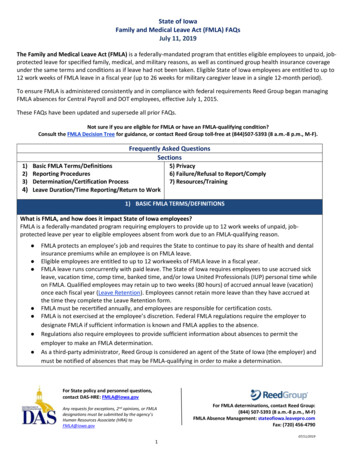
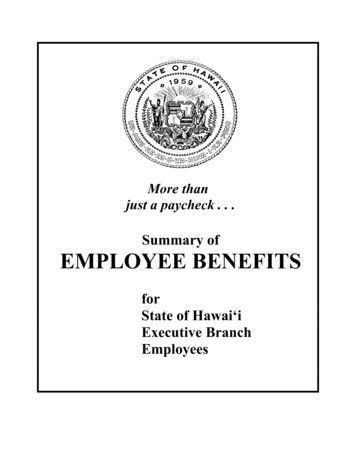
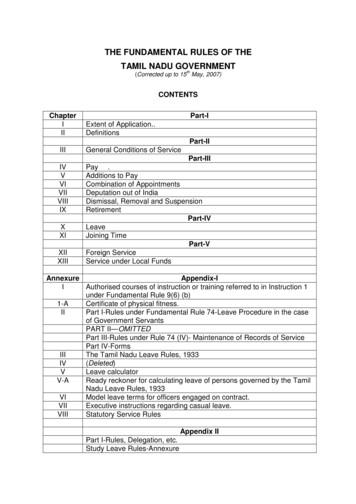
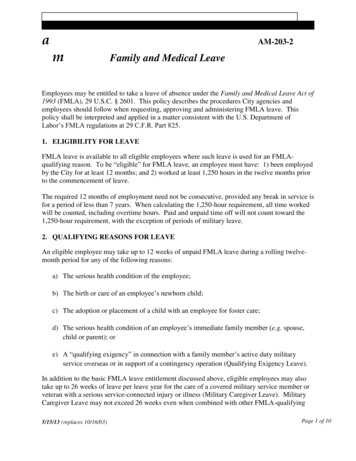
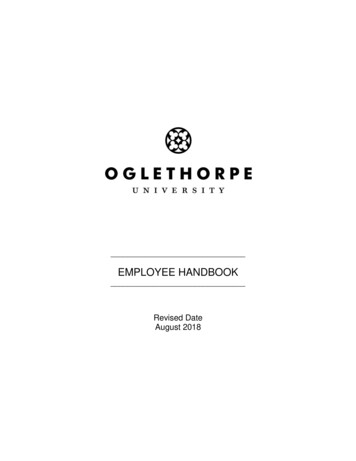
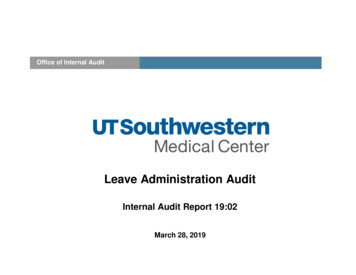

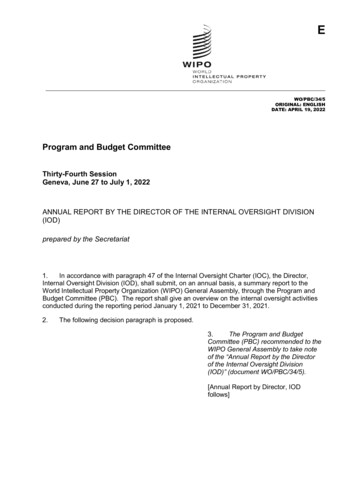
![FMLA Time Types and Leave Code Powerpoint-mw [Read-Only]](/img/56/fmla-time-types-leave-code-110612.jpg)
